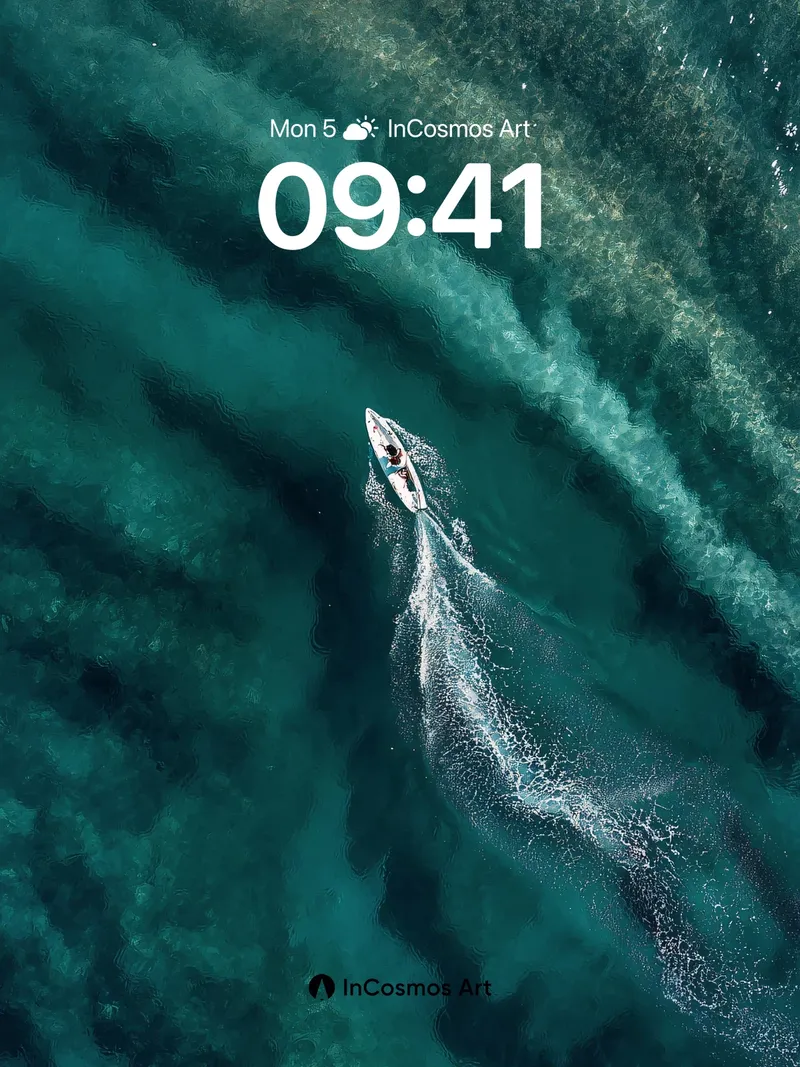The deep blue surface of the ocean mirrors the smallness of human presence within nature. A speedboat cuts through the water, leaving two white trails behind—like temporal marks etched into infinity. These dynamic traces are not merely signs of velocity but symbols of humanity’s attempt to inscribe itself upon vastness. Between the motion and stillness of water lies a delicate balance, as if nature quietly responds to human intrusion.
The Pulse of Water
The ocean is not a static entity but a living system in constant breath. Ripples, waves, tides—all manifest its rhythm. When vessels traverse the surface, the resulting wakes resemble heartbeats, weaving artificial forms into natural patterns. Visually, these trails form geometric designs, yet carry the weight of action—each journey becomes a dialogue, an inquiry, a redefinition of space.
Solitary Navigation
A single boat floats atop turquoise waters, unaccompanied yet profoundly whole. It does not rely on speed nor pursue direction—it exists solely in the moment. This silent drift is a resistance against modern anxiety. In a world accelerated by technology, slowness becomes a luxury, and solitude is reclaimed as meaning. Light from the sky reflects across the water’s texture, merging shadow and shimmer into a living canvas.
Boundaries and Transitions
The coastline marks where land meets sea, and civilization intersects with wildness. Sand yields gently, waves lap softly. This zone hosts complex, fragile ecosystems—coral reefs, shallow banks, sandbars—forming miniature worlds. Human interaction here often follows principles of minimal impact, honoring the pace and order of nature.
The Language of Color
Variations in water hue reveal depth, temperature, and ecological conditions. From deep blue to emerald green, then to translucent aquamarine, each shade corresponds to different seabeds and life forms. Sunlight penetrates layers, scattering glimmers that create natural light art. This chromatic gradient is not only visual pleasure but a language of perception, guiding understanding of environmental richness.























